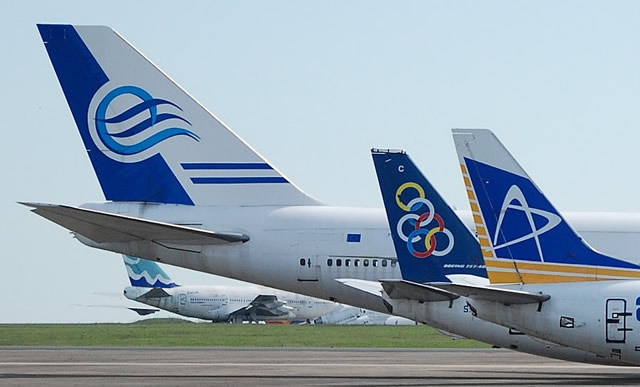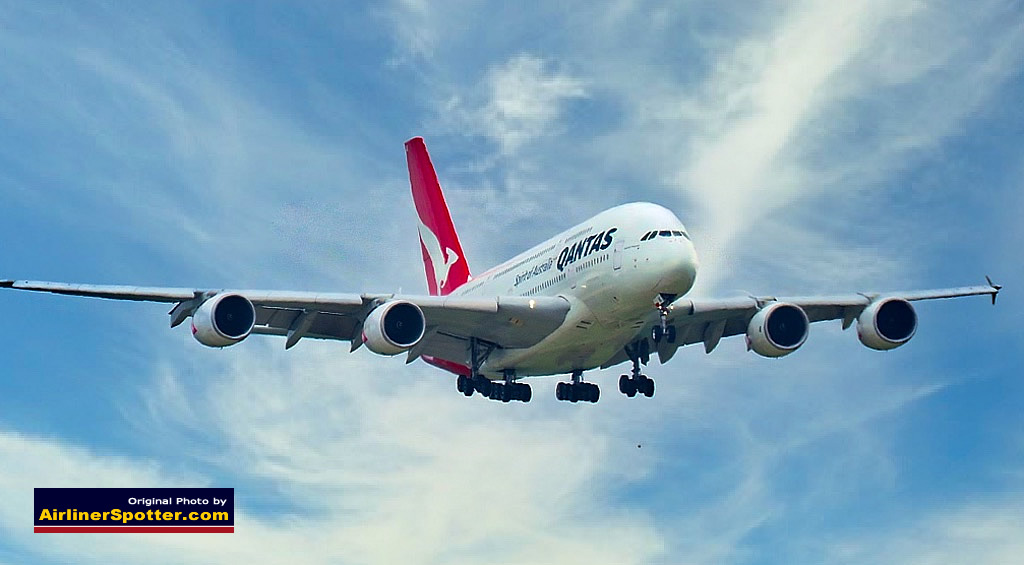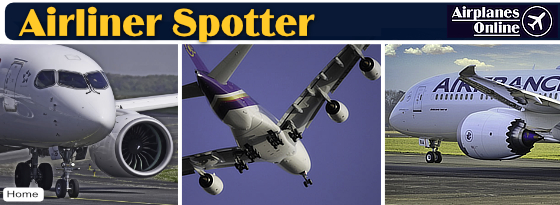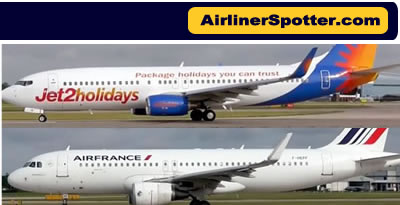 |
With the large variety of airliners serving the worldwide transportation market today, identification of individual aircraft manufacturers and planes can be a bit tricky.
Airliner spotting and photography remain a passion of ours today, as it does for thousands of others around the world. Some are casual, beginning observers, others are more fanatical, knowledgable and experienced.
But we all share an interest, fascination and appreciation of those magnificent flying machines that whisk us all around the world today.
Spotting Tips: What to Look for When Identifying an Airliner
Here are some details to look for when identifying an airliner, features that can help distinguish one aircraft from another:
- Overall size of the airliner, e.g., narrow-body or wide-body
- Jet or turboprop powered
- Number of engines
- Engine placement, i.e., under the wing or on the rear of the fuselage
-
Shape of the nose section
Qantas Airbus A380 on final approach at DFW Airport in Texas (Staff Photo) - Cockpit windshield design, i.e., number, placement and shape of glass windows
- Landing gear arrangement, number of wheels, and fuselage height above runway
- Number of entry doors along the fuselage
- Number and location of emergency exit doors
- Tailfin design
- Shape of APU exhaust
- Size of the wingbox
- Number and placement of passenger windows fore and aft of the wings
- Winglets, and their shape and design
A Few More Spotting Tips
Be knowledgable of security regulations and restricted zones when spotting at airports or private property. No one wants to get arrested for just enjoying a hobby! More and more airports today are welcoming spotters, but some are not. Airport Spotting Resources
Bring your best binoculars, and backup batteries for those cameras and phones ... plus maps, printed or digital. And food and water for those long spotting trips.
When possible, do a lookup on aircraft registration numbers ... some common registration inquiry sites.
And be sure to spot at places other than airports, like air museums, aviation airparks and airshows for other photo-ops and close-up spotting opportunities.
After saying all that ... a good starting point is our Airliner Spotting Guide.
Included below are illustrated guides for identifying a particular airliner.
Does It Have Four Engines?
If the airliner has two engines under each wing, for a total of four, it must be a Boeing 747, Airbus A340 or Airbus A380.
 |
It Looks Like a Three Engine "Tri-Jet"
If the airliner has three engines, one in the tail, and one under each wing or two on the aft fuselage, it is an older aircraft, probably a Boeing 727 or maybe a McDonnell-Douglas MD-11. Few of these are in service today, and many of the ones that remain active are in the air cargo marketplace.
 |
This Airliner Only Has Two Engines ... What Is It?
Now for the hard part! Most jet airliners in service today have two engines, one under each wing. Most active airliners manufactured by Boeing, Airbus and other manufacturers have this configuration. It might be a Boeing 737, Airbus A320, Boeing 777, Airbus A350, but it could be a A321 or 767. Our spotting guide to 2-engine jetliners should help!
 |
Propellers and Turboprops
Turboprops continue to play a significant role in air transportation. Airliners from companies such as Bombardier, ATR, Antonov and others can be spotted at airports worldwide.
 |

